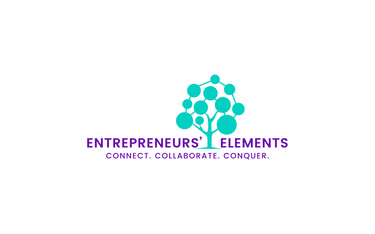Case Study: Patagonia — The Billion-Dollar Brand That Told Customers Not to Buy
7/14/20253 min read
What happens when a company dares to say “buy less” — and still grows to $1.7 billion in annual revenue?
Patagonia is proof that a mission-driven company can win in both impact and income. They’ve built a global business that’s profitable because it’s principled — not in spite of it.
But don’t get it twisted — this wasn’t some feel-good passion project. This was long-game strategy backed by ruthless focus, real leadership, and a refusal to separate values from execution.
The Business Model That Breaks the Rules
Patagonia started in 1973 as a climbing gear brand. But it evolved into a full-on environmental movement with a checkout button.
Their product strategy?
Sell fewer, higher-quality products that last.
Repair what you already own.
Resell used gear.
Design everything for durability and recyclability.
They didn’t just embrace circularity — they built the supply chain, marketing, and ownership structure around it.
Key Strategic Moves (That Most Founders Wouldn’t Dare Do)
1. Turned Activism Into Core Business DNA
“Don’t Buy This Jacket” campaign told customers to think twice before buying new. Sales spiked anyway.
They’ve donated 1% of all revenue to environmental causes since 1985 — over $140M given away.
They sued the U.S. government over public land protection. More than once.
In 2022, Yvon Chouinard gave away the company — 100% of profits now go toward fighting climate change through a nonprofit trust.
This isn’t cause marketing. This is identity. And it pays off.
2. Built Circularity Into the Business Model
Worn Wear Program — resells used gear, fixes busted jackets, and encourages repair instead of replacement.
98% of their products (as of 2025) are made from recycled, organic, or renewable materials.
They’ve avoided over 4,300 metric tons of CO₂ per year through circular supply chain upgrades.
They’re eliminating PFAS (a chemical used in waterproofing) from all new products — despite the complexity.
3. Locked in Purpose with a Legal Structure
They didn’t just write a mission statement. They rewrote the rulebook:
Voting stock (2%) goes to the Patagonia Purpose Trust, run by the Chouinard family and environmental allies.
Non-voting stock (98%) belongs to Holdfast Collective, a nonprofit that receives and reinvests profits into climate causes.
There are no shareholders demanding dividends. The only stakeholder is the planet.
That’s a bold move 99% of founders won’t make. But it ensures the mission survives even if leadership changes.
The Results
Metric Outcome
Revenue (2023) ~$1.7 billion
Valuation ~$3 billion
B Impact Score 166 (global top-tier)
Donations to date $140+ million
Recycled/organic materials 98% of products
Stores worldwide 70+
CO₂ avoided annually 4,300+ metric tons
Customer loyalty Among the highest in apparel
Employee retention Way above industry norms
They built loyalty so strong that customers will wait weeks for restocks rather than switching brands.
EE Strategy Takeaways
1. Purpose isn’t a marketing trick — it’s a moat.
Patagonia customers don’t just shop — they evangelize.
They trust the brand. They believe in it. And that makes Patagonia price-insensitive and competition-proof.
You can’t fake that. It takes decades of consistency.
2. You don’t need to scale fast. You need to scale right.
Patagonia has grown deliberately. Slowly. On purpose.
Their goal wasn’t domination. It was longevity.
And it worked.
Instead of raising VC and chasing exits, they reinvested. They became a $3B private company with no outside investors, no quarterly earnings calls, and no pressure to sell out.
That’s freedom. And founders forget it’s an option.
3. You can build a circular economy business and still win.
Resale. Repair. Regenerative supply chains.
All of it costs more upfront, yes.
But the return is better margins, higher retention, and long-term trust.
Most startups see waste as a cost. Patagonia turned it into a differentiator.
4. Leadership is the bottleneck — or the multiplier.
Yvon Chouinard didn’t just start a company. He kept it aligned for 50 years.
And when it came time to retire, he didn’t sell.
He restructured the whole business to protect its soul.
That’s rare. But founders — your exit doesn’t have to be a liquidation event. It can be a legacy move.
For Founders in EE: What Can You Borrow?
Even if you’re not in retail or climate, Patagonia offers blueprints for:
Founder values as growth levers — not afterthoughts
Mission-led marketing that actually reduces ad spend
Circular monetization models that deepen loyalty
Ownership structures that protect long-term intent
Sustainable operations that double as brand assets
You don’t have to replicate the scale.
But you should ask:
What does my company stand for that customers would rally around?
Am I building systems that last — or tactics that expire?
If I disappeared today, would my mission survive?
Final Thought:
Patagonia didn’t compromise between money and mission.
They aligned them — and redefined the category.
Their success wasn’t despite their values.
It was because of them.
So here’s your EE question of the week:
What part of your business feels disconnected from your values — and what’s one decision you could make this week to realign it?
Let’s talk in the comments. No fluff. No guilt. Just real founder-to-founder strategy.
